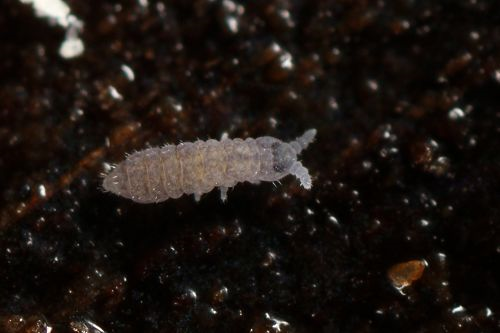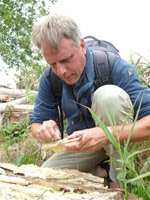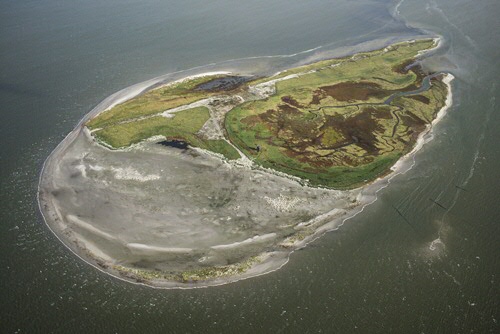Nieuwe diersoort voor Nederland ontdekt: springstaart op Griend
Op het onbewoonde Waddeneiland Griend is een nieuwe diersoort voor Nederland ontdekt. Het gaat om een springstaartensoort. Het 0,8 millimeter metende dier zat in het aangespoelde vloedmerk. ‘Het is leuk nieuws,’ meldt boswachter Erik Jansen van Natuurmonumenten. ‘Wie het kleine niet eert, is het grote niet weert.’ Springstaarten zijn op insecten lijkende dieren die een eigen groep vormen. Het aangetroffen dier is zeldzaam in Europa en werd nooit eerder aangetroffen in Nederland.

Baltisch driedoorntje

Prof. dr. Matty P. Berg, bijzonder hoogleraar aan de RUG, trof de springstaart tijdens onderzoek op Griend. ‘Ik vond één exemplaar op de overgang van het duin naar het wad, in een dik pakket vloedmerk,’ vertelt Berg enthousiast. Hij is een van de weinige kenners van deze diergroep in ons land. ‘Het gaat om Friesea baltica.’ Berg stelt voor om de springstaart de Nederlandse naam ‘Baltisch driedoorntje’ te geven. ‘De soort komt voor in de Baltische regio en bovenop het achterlijf staan drie doorntjes.’
Rovend bestaan
Het Baltisch driedoorntje leeft langt de kust, in zandige duingraslanden en duinen. Net als andere springstaarten heeft het dier een springvork aan het einde van zijn lijf, waarmee hij weg kan springen. ‘Het is vermoedelijk een rover,’ denkt professor Berg. ‘Dat is vrij uitzonderlijk onder springstaarten, want de meeste soorten eten vooral schimmels. Het Baltisch driedoorntje heeft monddelen die wijzen op een rovend bestaan. Hij eet vermoedelijk onder meer aaltjes en eieren van insecten en andere bodemdieren.
Griend natuurparel
Natuurmonumenten beheert Griend al ruim honderd jaar. Het eiland ligt halverwege Harlingen en Terschelling en van groot belang voor onder meer broedende meeuwen en grote sterns. Daarnaast rusten veel trekvogels zoals drieteenstrandlopers, rosse grutto’s en kanoeten tijdens hoogwater uit op Griend. Tijdens het broedseizoen bewaken vogelwachters de rust op het eiland. ‘Om het beheer van Griend goed te kunnen doen, laten we onderzoek uitvoeren op het eiland’, legt Jansen uit. ‘Het ontdekken van een nieuwe soort is leuke bijvangst.’ In 2007 herontdekten de vogelwachters een uit Nederland verdwenen nachtvlinder, de stippelrietboorder.

Springstaarten
Springstaarten leven vooral in en op de bodem. Ze leven niet alleen in natuurgebieden, maar ook in tuinen. ‘Het zijn nuttige dieren,’ legt Berg uit. ‘De meeste soorten eten rottende plantenresten en schimmels en helpen zo bij de afbraak in de natuur. Zelf worden de springstaarten weer gegeten door bijvoorbeeld insecten en spinnen.’ Als de omstandigheden geschikt zijn voor de springstaarten, kunnen ze in enorme aantallen voorkomen.
Meer nieuws
-
02 december 2025
Student Menna Zahran wint Unilever Research Prize
-
27 november 2025
Vliegtuigen spotten met een radiotelescoop
